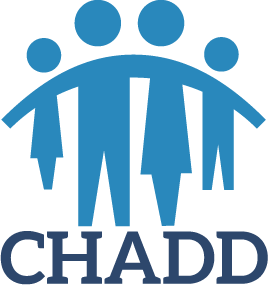 Parents, Halloween is right around the corner, and most kids are giddily anticipating a fun night of costumes, trick or treating and eating way too much candy. Now is a good time to think about safely enjoying the activities the evening has in store. Halloween safety is especially relevant for kids with ADHD who typically need extra support with impulse control, emotional regulation and pacing. Younger kids will likely need more supervision than usual as they will be more easily activated. Older kids will benefit from a Halloween safety game plan to which you both agree ahead of time so check-ins are predictable and collaborative. Here are 3 practical tips to ensure your child has a delightfully spooky and safe Halloween. (4-minute read)
Parents, Halloween is right around the corner, and most kids are giddily anticipating a fun night of costumes, trick or treating and eating way too much candy. Now is a good time to think about safely enjoying the activities the evening has in store. Halloween safety is especially relevant for kids with ADHD who typically need extra support with impulse control, emotional regulation and pacing. Younger kids will likely need more supervision than usual as they will be more easily activated. Older kids will benefit from a Halloween safety game plan to which you both agree ahead of time so check-ins are predictable and collaborative. Here are 3 practical tips to ensure your child has a delightfully spooky and safe Halloween. (4-minute read)
3 ADHD-Friendly Halloween Safety Tips
1. Mindfully Choose Activities
You know your child best, so choose the age-appropriate Halloween activity that best suits your child. Kids with ADHD often become overwhelmed or over excited in stimulating environments. This can sometimes lead to hyperactivity and other times can cause kids to withdraw. So, consider whether going to a neighbor’s party may be too much for your child. Will trick or treating be better with or without a friend? Perhaps your child will have more fun passing out candy at home instead of being out and about? There is no one right way to celebrate Halloween. Remember, whatever activity you choose, time-box it to avoid your child with ADHD becoming overstimulated. And as always, remain flexible and prepare to make adjustments if plans don’t work out the way you envisioned.
2. Focus on Physical Safety
 It’s easy for your child to get swept up in Halloween festivities. There’s a lot going on and it’s all very easy to make quick decisions without thinking them through first. Many kids with ADHD have struggles with impulse control. Remember, kids with ADHD have a hard time with impulse control. When trick or treating, they may run out onto the street without checking for cars, or run off to chase a friend without telling you. Talk with your child about Halloween safety guidelines and expectations before heading out the door. Then, ask for your child to repeat these rules back to you two times. This will ensure that they heard you and the information was transferred to longer term memory. If your child is younger and needs supervision, be ready to keep an extra close eye on them. If they are older and plan on going out with friends, come up with a Halloween safety agreement together in advance. Discuss who they’ll be hanging out with, what their game plan is in terms of where they are intending to go, what time they’ll come home, and the nature of parent contact. Decide on what your child should do if they want to come home early or if they get separated from their peer group. How can they contact you without losing face? It may be a good idea to reach out to other parents to collaborate on additional channels of communication and supervision.
It’s easy for your child to get swept up in Halloween festivities. There’s a lot going on and it’s all very easy to make quick decisions without thinking them through first. Many kids with ADHD have struggles with impulse control. Remember, kids with ADHD have a hard time with impulse control. When trick or treating, they may run out onto the street without checking for cars, or run off to chase a friend without telling you. Talk with your child about Halloween safety guidelines and expectations before heading out the door. Then, ask for your child to repeat these rules back to you two times. This will ensure that they heard you and the information was transferred to longer term memory. If your child is younger and needs supervision, be ready to keep an extra close eye on them. If they are older and plan on going out with friends, come up with a Halloween safety agreement together in advance. Discuss who they’ll be hanging out with, what their game plan is in terms of where they are intending to go, what time they’ll come home, and the nature of parent contact. Decide on what your child should do if they want to come home early or if they get separated from their peer group. How can they contact you without losing face? It may be a good idea to reach out to other parents to collaborate on additional channels of communication and supervision.
Halloween Memories
 I live in a town of about 35,000 people and I remember those Halloween nights when my daughter was in middle school. She told me which friends were part of her group and what streets they were hoping to hit for the most goodies. By making these choices, she was able to exercise her growing autonomy. But we still needed a safety plan. I contacted a few of those parents and we brainstormed the type and frequency of contact with the group that made us comfortable and what we think our kids would agree to. Then we each talked with our kids about our ideas and emphasized the importance of their cooperation for being able to go out alone on Halloween night. All of the kids agreed to answer the phone or text us when they changed locations and for one parent to check in every 30 to 45 minutes. Before they left, we made sure their phones were on, with loud ring tones and vibration as well. Off they went, we stayed in touch and a good, safe time was had by all.
I live in a town of about 35,000 people and I remember those Halloween nights when my daughter was in middle school. She told me which friends were part of her group and what streets they were hoping to hit for the most goodies. By making these choices, she was able to exercise her growing autonomy. But we still needed a safety plan. I contacted a few of those parents and we brainstormed the type and frequency of contact with the group that made us comfortable and what we think our kids would agree to. Then we each talked with our kids about our ideas and emphasized the importance of their cooperation for being able to go out alone on Halloween night. All of the kids agreed to answer the phone or text us when they changed locations and for one parent to check in every 30 to 45 minutes. Before they left, we made sure their phones were on, with loud ring tones and vibration as well. Off they went, we stayed in touch and a good, safe time was had by all.
3. Pace and Don’t Overstimulate
For many kids, Halloween is a competitive sport, one where the goal is collecting the most candy in the shortest amount of time. Left to their own devices, kids bolt from one house to the next until they’re exhausted or their treat bag becomes too heavy to carry.
Kids with ADHD need to pace themselves so they don’t take on too much and burn out.
Overstimulation and exhaustion in kids with ADHD are safety risks as they can cause your child to let down their guard and be less careful. Remember, slow and steady wins the race. Rushing through the evening means they may miss out on the fun of being with friends, admiring decorations and enjoying themselves.  Talk with them in advance about monitoring their excitement with steadiness. Brainstorm a few ideas that will help them stay engaged without getting too overwhelmed or distracted early in the night. Maybe saying ‘Hello’ or ‘Thank you’ at each house will give them enough pause to regroup. Some kids collect money for UNICEF or another charity which can also slow things down. Emphasize the importance of savoring their experience rather than racing through it. You can help your child with pacing when it comes to eating their Halloween candy. As tempting as it is to overindulge, eating a little at a time means the candy stash will last longer and the dreaded post-Halloween stomachache will probably be avoided. So, set some guidance around how many pieces of candy your child can have when they get home that night and each day following the holiday. If they like to sneak their candy, consider where it can be stored to minimize this habit and bring it out at a specific time of day.
Talk with them in advance about monitoring their excitement with steadiness. Brainstorm a few ideas that will help them stay engaged without getting too overwhelmed or distracted early in the night. Maybe saying ‘Hello’ or ‘Thank you’ at each house will give them enough pause to regroup. Some kids collect money for UNICEF or another charity which can also slow things down. Emphasize the importance of savoring their experience rather than racing through it. You can help your child with pacing when it comes to eating their Halloween candy. As tempting as it is to overindulge, eating a little at a time means the candy stash will last longer and the dreaded post-Halloween stomachache will probably be avoided. So, set some guidance around how many pieces of candy your child can have when they get home that night and each day following the holiday. If they like to sneak their candy, consider where it can be stored to minimize this habit and bring it out at a specific time of day.
What about all the unwanted candy?
Some schools and dentists collect candy donations. Encourage your child to give away some of their candy as an act of kindness and generosity toward others. Some families have their kids swap some of their candy for a toy or activity. This way the child still gets to have fun but without all that sugar. Talk with your child and come up with your own family tradition for excess treats. However you chose to celebrate, remember have fun and make fun-filled memories. I wish you and your family an enjoyable and safe Halloween! 
Follow me on social media: YouTube, Facebook, Twitter, and Instagram.
Invite Me to Speak | Join A Group | Newsletter | Read my blog
Sign-up for my newsletter today and receive 10% off!

 But, you
But, you 











 I often ask my clients with ADHD to think of their super-power–something they’re really good at and proud of. If we’re only focused on what isn’t working, we’re bound to miss all the gifts and wonderful qualities that make us unique. For example kids and adults with
I often ask my clients with ADHD to think of their super-power–something they’re really good at and proud of. If we’re only focused on what isn’t working, we’re bound to miss all the gifts and wonderful qualities that make us unique. For example kids and adults with 
 Many adults with ADHD struggle with structure, following rules and creating new routines. Starting a tedious, unrewarding task can be challenging, and it can be equally tough to stay with it until completion. Neurodivergent people can be overly fixated on maintaining a routine at the expense of other things, which can turn into a vicious cycle of frustration and self-defeat.
Many adults with ADHD struggle with structure, following rules and creating new routines. Starting a tedious, unrewarding task can be challenging, and it can be equally tough to stay with it until completion. Neurodivergent people can be overly fixated on maintaining a routine at the expense of other things, which can turn into a vicious cycle of frustration and self-defeat. 
 Be specific but with a narrow focus. This is what you want to change. One of the reasons that Bree was successful is that she selected one thing to work on, arriving at school earlier. Since she didn’t want to change what she did before going to work, she woke up earlier, regardless of the time she went to bed. Bree also set alarms and alerts on her phone and her computer and even bought an alarm clock. Many people with ADHD get too caught up in how to make something work because they have widened their field.
Be specific but with a narrow focus. This is what you want to change. One of the reasons that Bree was successful is that she selected one thing to work on, arriving at school earlier. Since she didn’t want to change what she did before going to work, she woke up earlier, regardless of the time she went to bed. Bree also set alarms and alerts on her phone and her computer and even bought an alarm clock. Many people with ADHD get too caught up in how to make something work because they have widened their field. 

 As the digital world plays an ever-growing part in our lives, it is more important than ever to help children establish healthy media habits. A balanced media diet begins with the understanding that screen use is a privilege, not a necessity.
As the digital world plays an ever-growing part in our lives, it is more important than ever to help children establish healthy media habits. A balanced media diet begins with the understanding that screen use is a privilege, not a necessity. 
 Since everybody dislikes family
Since everybody dislikes family  Many kids with and without ADHD will tell you that
Many kids with and without ADHD will tell you that  But for other families whose children or teens sneak screens at night including watching television or movies on the computer or texting with friends at two o’clock in the morning, it’s not possible for them to exert the impulse control and maturity they need to monitor screen use. Sometimes parents have to keep devices in lockboxes in their bedrooms or turn off the internet at night. Ideally, it would be great if you could set a time for your youngster to give you his phone before bed and pick it up in the morning.
But for other families whose children or teens sneak screens at night including watching television or movies on the computer or texting with friends at two o’clock in the morning, it’s not possible for them to exert the impulse control and maturity they need to monitor screen use. Sometimes parents have to keep devices in lockboxes in their bedrooms or turn off the internet at night. Ideally, it would be great if you could set a time for your youngster to give you his phone before bed and pick it up in the morning. 


 S
S




 Use the
Use the  Kids with ADHD like to know what’s coming down the pike because it helps them prepare for transitions and adjust their expectations.
Kids with ADHD like to know what’s coming down the pike because it helps them prepare for transitions and adjust their expectations. 


